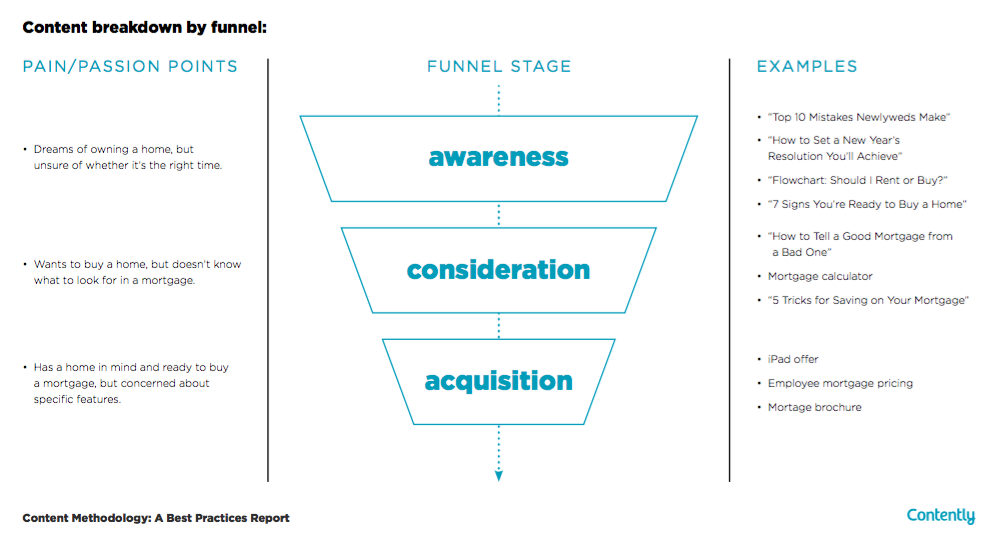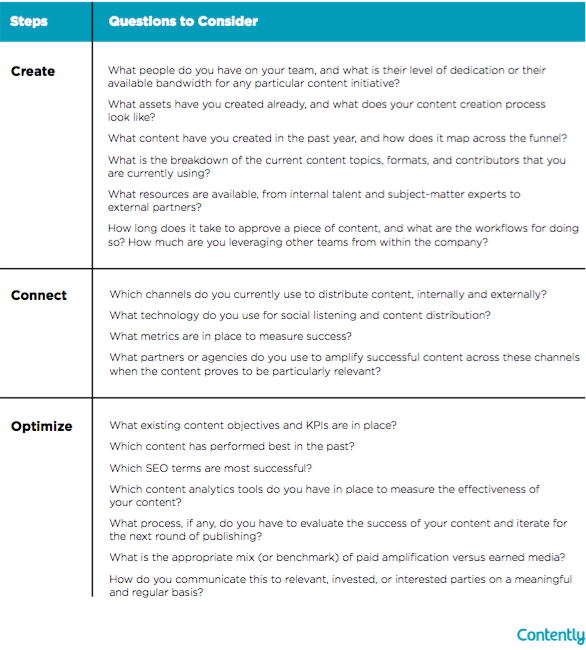Brands
4 Questions You Need to Answer Before You Create a Content Plan
One of the most important and innovative mechanical advances is the flywheel, a device used to store and conserve energy, and a critical component of everything from the steam locomotives of the early 1800s to NASA spacecrafts today. Remarkably powerful and efficient, the flywheel needs an initial torque to push it forward. Once in motion, it’s able to build and store more energy through each cycle, increasing its total output and effectiveness over time.
At Contently, we’ve developed what we call a content methodology, a process to continuously improve the effectiveness of a company’s content across the enterprise. A content methodology works in much the same way as a flywheel. Organizations that invest in a content methodology become self-sustaining. Instead of having to stop and apply a new strategy at the start of each new campaign, they harness the energy of the previous cycle to power the next round of publishing.
First, however, it needs that initial torque—a content plan that will guide your first round of publishing. Before you create a content plan, you need to answer four big questions that make up the pillars of the strategy.
- Objectives: What are my content objectives and KPIs?
- Audience: Who am I trying to reach, and what are our key channels?
- Market: Where’s the white space in the content area I’m focusing on?
- Resources: What resources does our organization have already, and what do we need to add?

What are my content objectives and KPIs?
Clear objectives and KPIs are the most crucial aspect of any content marketing effort. Without them, content success cannot be championed within the organization, and the program cannot improve or evolve over time.
Advanced organizations go beyond standard industry metrics such as sales and leads, or vanity metrics such as likes and pageviews. Instead, they hone in on metrics that measure how they’re building deeper relationships with consumers and influencing myriad business goals, such as “cost savings, risk and crisis management, or even productivity improvements,” according to Altimeter Group’s “A Culture of Content” report.
Ultimately, it helps to work backwards from business goals to determine content objectives, before listing KPIs to measure whether those objectives are being met. For a set of sample goals, content objectives, and KPIs, see the chart below:

Who are we trying to reach, and what are our key channels?
Organizations face a “content everywhere” challenge. Consumer attention is splintered across dozens of digital channels. In order to earn attention, organizations need to know where to find their audience and what content will capture and retain attention in each specific channel.
Behavior triggers take precedence over demographics
Instead of looking at traditional factors such as age group, HHI (a measure of marketing concentration), or geography, ask what behaviors, challenges, or motivators members of the target audience have in common. These audience identifiers can be as broad as customer segments or as specific as highly detailed personas. In lieu of traditional demographics, for instance, Electrolux CMO MaryKay Kopf focuses on questions that get to the heart of her target audience’s challenges and beliefs: How are they cooking? How are they talking about food? How do they feel about sustainability?
The answers to these questions may reveal sub-audiences with different concerns and triggers, which will help inspire different content types and formats that you can create to engage each of them.
Map to the funnel
Identify the intersection of passion points and pain points for consumer personas at each stage of their journey through the sales funnel. See an example for a real estate brand below:

Channel strategy
Faced with both finite resources and an ever-growing ecosystem of digital platforms and channels, organizations must determine which channels to focus on when they publish and distribute content. Chase, for instance, boosted its traffic last summer by placing content prominently on its homepage, leveraging the 35 million people who visit Chase.com each month; distributing content through theSkimm, a popular newsletter for millennials; and sharing content on its social channels.
Five best practices, applied periodically, help determine channel strategy:
1. Identify channels where your target audience or personas already seek information relevant to your product and brand message. This includes competitors and publications they already read or spend time with.
2. Winnow down this list of popular sites and properties to where consumers and prospects might go when they are in the market for relevant and/or similar products and services. Identify the channels where they spend time and where they will be receptive to your message.
3. Use web analytics to examine which channels your audience arrives from, such as social, email, or search.
4. Identify the most popular content formats for each channel.
5. Use publicly available traffic and referral data from sites like Alexa, SimilarWeb, and Compete to learn where the readers share their content.
Where’s the white space?
“What kind of content should we create?” is a question that plagues most organizations trying to launch a content operation for the first time. Those that are most successful follow a few key guidelines:
1. Find the white space in your market. Where are opportunities? What are competitors doing—or not doing—in their marketing initiatives? What customer pain points can you help address? Answers to these questions help identify content opportunities.
2. Build up to a big idea. Regardless of content type, all GE content corresponds to the brand message of “Ecomagination.” IBM’s idea is “Smarter Planet.” What’s the concept your brand, product, company, and service can own?
3. Identify the intersection of topics your brand can own—be it entertainment content, educational and informative content, or utility content—and what your audience seeks.
4. Develop a voice, tone, and perspective that’s original. Even for a well-covered topic, determine how you can add value. “Me-too” content has little value. Avoid adding to the noise.
5. Use tools like BuzzSumo to discover what content formats and lengths are shared the most, and which topics your audience discusses most. Identify which strategies work best for other publishers and brands, and consider how to emulate them.
6. Identify keywords with the greatest search volume but the lowest competition.
What resources does our organization have already, and what do we need to add?
When evaluating the resources available to a content marketing program, most organizations look to easily quantifiable line items: existing content, available technology, budget, headcount. Just as important are the people involved: what they know, what they believe in, their creative talents, and how they work together.
The final input to a content methodology is an honest assessment of how an organization’s content resources all fit together, and where additional talent, technology, and processes are needed. Below is a chart of questions to consider, as well as a maturity model to scale against.


This is a modified excerpt from “Content Methodology: A Best Practices Report,” by Joe Lazauskas and Rebecca Lieb.
Image by ShutterstockGet better at your job right now.
Read our monthly newsletter to master content marketing. It’s made for marketers, creators, and everyone in between.




